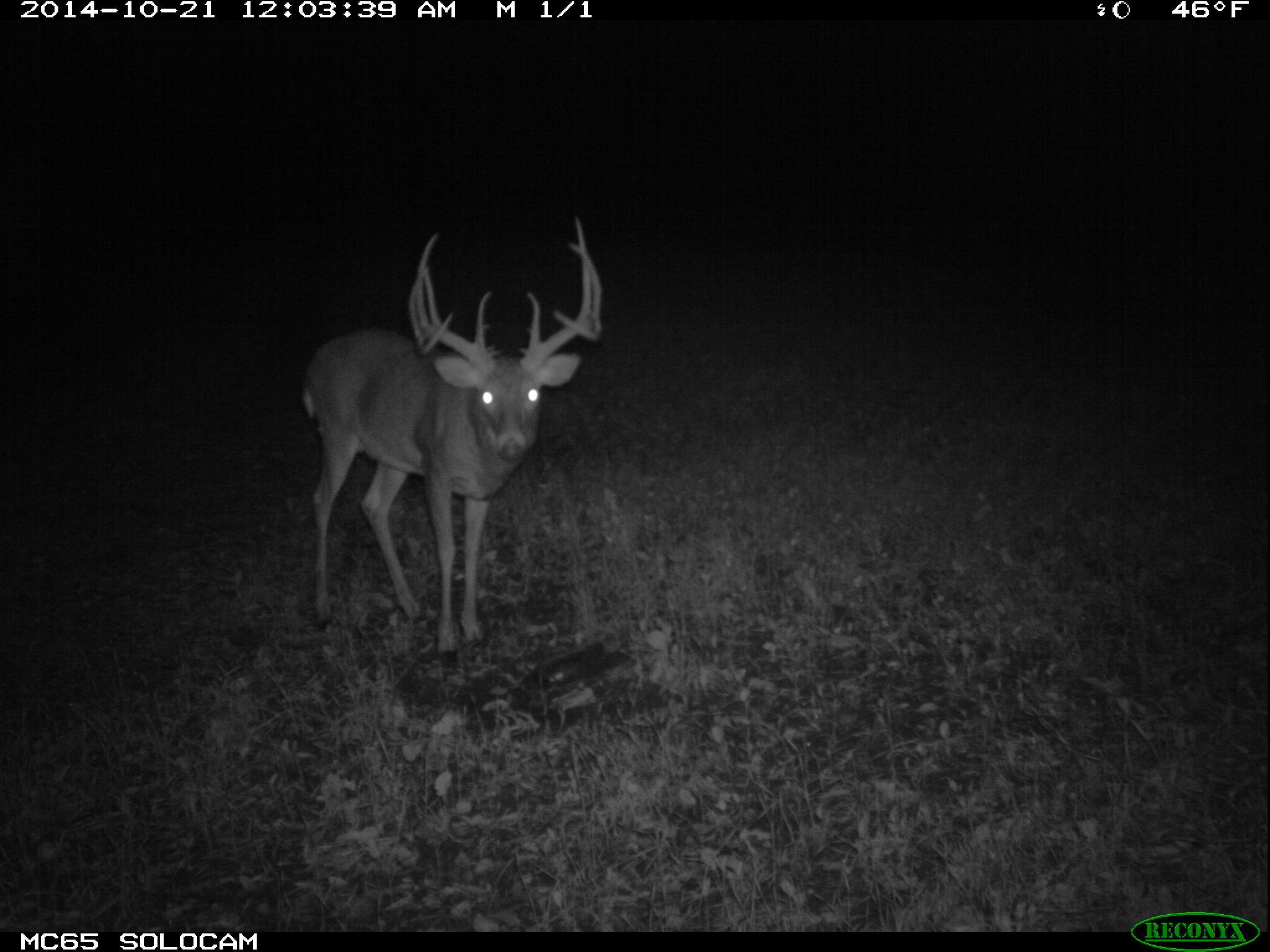The Biggest Buck We Have Never Hunted
Filed under: Hunting Blog, Hunting Tactics
Understanding a buck’s characteristics will be the deciding factor in your success or failure this fall. When the calendar changes from September to October and bucks start to shift into pre-rut phase you never know who will step in front of your camera. When that buck does make his appearance, it’s important for you to know how to plan your strategy.

Royal George making his usual stop just after midnight. If his pattern doesn’t change it will be tough to harvest this buck.
Bucks that would gross score over 160” are extremely rare for us here in the Ozark Mountains of southern Missouri. So when a buck we call “Royal George” walked in front of our Reconyx camera last summer, we quickly put him at the top of our minds, but since he was only three we wanted to give him another year. George is an incredible buck, and once we got to know him, we found out one of his characteristics that helped him get so big. Looking through all the images we have of him, it’s safe to say that 95% of them are at night. The remaining 5% of pictures were taken during June when bucks are seen more regularly during daylight. Now that George has reached 4.5 years old he’s on the hit list, but there is a difference between being on the hit list and being hunted. Here is where a lot of hunters will make mistakes. Listen up! Just because a hit list buck is showing up at one of your cameras, that doesn’t mean you should be hunting him with regularity. Why should you waste time and put pressure on a buck that probably won’t step out while you’re hunting anyway? You shouldn’t. This brings us back to George who is very nocturnal. When I say very, I’m saying that every picture taken this year of George has been before or after legal shooting hours. Yes, George is living on The Proving Grounds, but he has shown no signs of moving during daylight. What does this mean? We’re not focusing our time hunting a buck that we have a very small chance of even seeing, let alone harvesting. The best approach we can have with bucks like George is to stay out. Let him experience life with little to no pressure, and hope that when the time comes for him to be searching for a receptive doe he’ll choose her over darkness. When that day comes we’ll be ready to capitalize on his decision to choose does over darkness.
One of the biggest mistakes a hunter can make is getting anxious and spending hours hunting a buck that isn’t moving during daylight. This mistake can push a buck even farther into cover and darkness. By limiting the amount of pressure on your deer herd during early season, you can reap the rewards of daylight activity when the temperatures are cool and the hit list bucks are on their feet.
Daydreaming of Whitetails,
Adam



